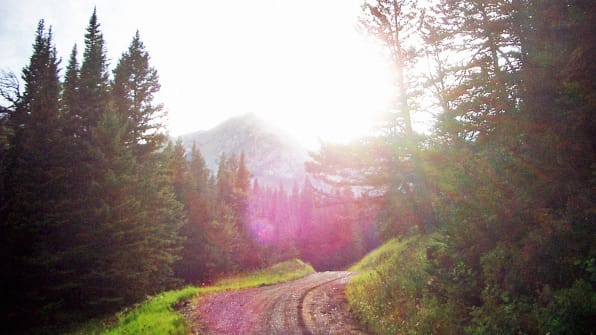How Tiny Bozeman, Montana, Became A Booming Tech Town
San Jose, this is not.
It’s a Friday afternoon, and Andrew Hull, the founder and president of marketing consulting firm Elixiter, is still hard at work in his Bozeman, Montana, office. But soon—insanely soon—he’ll be setting up camp with a troop of local Boy Scouts. When he finally ducks out of the office at 4 p.m., he, the scouts, and four other chaperones are at a trailhead within the hour, ready to backpack three miles. Camp is set before nightfall.
“You can get anywhere in Bozeman in 15 minutes,” says Hull, whose 40-employee company’s clients include Fitbit and Aetna. “Where Elixiter is, we have access to trailheads within 15 minutes. Skiing is 25 minutes.”
Bozeman (pop. 43,405) has long been a magnet for outdoor enthusiasts; count Hull, an avid cyclist, among those ranks. But the small city has also earned another reputation as a boomtown for entrepreneurs, many in high technology. Thanks in part to its natural amenities, the presence of a university, and an embrace of the digital economy, Bozeman is turning into a startup hub in the middle of nowhere.
The place is incomprehensibly scenic, even by Montana standards, situated in a spot where four mountain ranges decide enough is enough and relax into a fertile valley. Yellowstone National Park is a 90-minute drive. A River Runs Through It was filmed on the nearby Gallatin River, so trout fishing is a given.
Like many places in the state, the local economies were driven for years by tourism and agriculture. But unlike many, this city in the southwestern corner of Montana started to diversify its economy in the 1980s when photonics companies started to build lasers, and manufacturing and outdoor-gear firms also settled in. A conservationist might bump into a think-tank economist at one of the local breweries. Montana State University (MSU) provides both thousands of jobs and an annual batch of new employees.

The real major transformation in the town’s economy began in 1997, when Greg Gianforte founded RightNow Technologies, a customer relationship management firm. Gianforte had previously started a company in New Jersey, and after selling that one to McAfee, he set his sights toward Bozeman to raise a family. “We had this idea that the internet removed geography as a constraint,” Gianforte says. “When we started, that was a theory; it wasn’t a fact.”
RightNow eventually grew to 1,100 employees, and Oracle bought it for $ 1.5 billion. Some 500 RightNow employees worked in Bozeman, and the Oracle acquisition seeded a new class of entrepreneurs. Gianforte founded a startup incubator and entered politics; the Republican is following an unsuccessful 2016 run for governor with a bid for the House of Representatives seat vacated by Secretary of the Interior Ryan Zinke. Sixteen other RightNow alumni have since started companies in Montana, many in Bozeman.
In the five years since the Oracle deal closed, this wave of founders is reshaping the state economy. According to a University of Montana survey, the state’s high-tech sector in 2016 paid 14,500 employees a median wage of around $ 60,000. Both are sums a single West Coast company could top, but those are significant totals in a state with barely more than 1 million people where the median household income is about $ 50,000.
“One problem we’ve had is that, historically, graduates from Montana colleges have been told to leave the state,” says Christina Quick Henderson, executive director of the Montana High Tech Business Alliance. “With the growth of the industry, that’s no longer true.” Among the 25 least-populated states, Montana has topped the Kauffman Foundation’s rankings of startup activity for four years running. Indeed, the 138 members of Quick Henderson’s trade organization added more than 900 jobs in 2016, and nearly 1,000 are expected to be added to payrolls in 2017.
Odds are that those employees will remain in those jobs, too. Montana employers enjoy preposterously high retention rates compared with their counterparts in larger metros. “They don’t want to leave,” says Hull. “We have a 75% lifetime retention rate. That’s pretty crazy in the tech and marketing industry.”

It’s not a phenomenon exclusive to Elixiter. The Kauffman Foundation recently studied the startup scenes in Bozeman and Missoula, home of the University of Montana, and found a similar result. “It’s a big contrast: People in Silicon Valley are always looking for better job opportunities . . . [but] people in Montana are a lot more laid back,” says Yasuyuki Motoyama, the Kauffman Foundation’s director of research. “They don’t constantly seek other opportunities or counteroffers. They are happy with the company where they are working.”
One reason for the high retention rates is that work-life balance, the subject of many a Silicon Valley manifesto, is manifest in Bozeman. Single-minded careerism isn’t really a thing in Bozeman—folks come to work and participate in the area’s copious outdoor activities. That notion is baked into company cultures. “When we do our team-building activities, if we can incorporate river rafting or hiking or doing something outside, that’s one of our big goals,” says Daren Nordhagen, president of Foundant Technologies.
Keeping employees in Bozeman may be easy, but finding them is a challenge. Instead of competing with other companies amid a large talent pool, Montana firms for years had to fill the pool themselves. Gianforte’s bait of choice was home-state pride. Twice a year, RightNow would send postcards to MSU computer science grads who had left the state, and the company erected billboards on highways leading to Big Sky ski resort and Yellowstone. He says 80% of his employees in Bozeman were born in Montana, and the rest were “hunting and fishing fools” who wanted the Montana lifestyle and a good wage.
Subsequent entrepreneurs have followed suit, though they aren’t having to work quite as hard as RightNow did to lure folks to Bozeman. MSU is churning out more graduates—it is now the largest college in the state—and Bozeman’s growth has made it more palatable for many incoming residents. The downtown is densifying and adding amenities. Some remain astonished that the town is now home to a wine bar.
“Most of [our employees] had already made the choice to live in Bozeman,” Nordhagen says. “There are people that move here because they want the outdoor lifestyle, or they want to get out of the big city and have a more rural area to raise their families, yet still have access to decent jobs, decent restaurants, and an airport. There are tons of people who are moving to Montana, and then figuring out the rest once they get here.”
That’s not to say workforce development isn’t a critical element of business. MSU is not MIT, and the Bozeman metro area holds 100,000 people, not 1 million. Thus, extensive employee training programs are in order. Elixiter, for its part, runs one akin to a vocational apprenticeship. All new employees undergo three months of classroom-style training—homework included—taught by fellow employees, followed by three more months of shadowing a coworker.
The pace of training fits with the overall growth model of most Bozeman companies. This is a population of founders comfortable with 20% growth and the addition of just a handful of staffers each year. (Not that there aren’t fast growers—five Bozeman firms, including Elixiter and Foundant, made the Inc. 5000 list in 2016.) One reason for this is a lack of venture capital. Aside from Next Frontier Capital, a local VC firm with a $ 21.5 million fund, substantial funding is virtually nonexistent in Montana. Most company founders bootstrap, so growth is curtailed by the available resources.
Entrepreneurs in town feel the fiscal reality suits the rancher-and-miner culture of the state and helps yield resilient companies. “There’s this attitude of, ‘We’re going to figure this out.’ If you grow up on a farm or ranch, if something breaks, you have to fix it. There’s nobody else to do it for you,” says Hull. “So, there’s this spirit of ingenuity, of figuring things out, and that translates well to the tech world.”
A reliance on hiring and training locals has its drawbacks. An obvious one is a lack of diversity. Hiring from the state workforce essentially means hiring white—87% of Montanans are Caucasian—and few founders are actively broadening their recruiting pipelines. Multiple executives labeled their applicants a “self-selecting” group, meaning folks turned off by the Montana lifestyle don’t bother applying. There are perks to this approach. A lifelong New Yorker would find Bozeman severely lacking in cultural amenities, while someone already living in Bozeman likely values fly fishing more than access to, say, international eateries. The latter person is more likely to fit in with these companies. It’s also more likely that person is white.
It’s not just racial diversity that’s affected. Montana lacks statewide nondiscrimination policies based on sexual orientation or gender. When Bozeman passed its own nondiscrimination policy in 2014, a major opponent was the town’s tech figurehead—Gianforte. Buzzfeed reported in 2016 that Gianforte lobbied against an LGBT nondiscrimination ordinance, and his family trust has given $ 1.1 million to groups that fight against reproductive rights and LGBT equality.
The lack of diversity could affect the bottom line as companies’ ambitions shift. “Some companies want to hire dozens of people a year, and that means you have to recruit people from the outside,” says Kauffman’s Motoyama. “In IT-related jobs, you may need to find people from India, people from China. You don’t find those kinds of software engineers in Montana.” The job-hoppers some Montana entrepreneurs dread often are some of the most talented employees, are diverse, and sometimes come from far-off places.
Matt Fulton would like some of those folks to find their way to Montana. During a five-year stint with Palo Alto-based Medallia, Fulton worked remotely from Bozeman for an 18-month period. After briefly returning to Palo Alto, he and wife Abby Schlatter moved back to Bozeman and started a company called commonFont in 2013. Fulton enjoys the familiar Bozeman perk: His employees love the town, and they want to stick around. But if he interviews a candidate whose primary motivation is to live in or move to Bozeman, rather than work at commonFont, he won’t extend an offer.
“That’s one of the things that I like least about Bozeman. I wish there was more moving around, more competition for top talent,” Fulton says. “Retention is high because there’s not enough choice, and not enough competition. . . . If there was more of a culture of people looking around and evaluating other opportunities, I think that would be helpful and healthy. It would help us attract and retain a higher caliber of workforce.”
If that lack of competition is simply a volume problem, then it could be solved by a continued surge in startup activity. Marty Ostermiller was RightNow’s director of finance until he left town in 2012, after the Oracle acquisition; he now works in Salt Lake City. “That’s the peril in Bozeman—your options are limited, and they were especially limited then,” he says. “But I think that’s part of why Bozeman became an entrepreneurial place. People wanted to stay there, and it wasn’t completely obvious where to work.”
Founders who have stuck around share a considerable collective accomplishment: Few Western towns as small as Bozeman provide so many middle-class jobs for locals. Professionals from Idaho or Wyoming or New Mexico often face dichotomous choices: Either flee your home state for better-paying jobs in a coastal metro, or stick around and weather the boom-bust cycles of extraction-based economies and commodity agriculture. Someone entering the Bozeman job market today won’t face such polarizing choices.

Intelligent planning and a bit of luck have stoked the boom. Proximity to Yellowstone is the reason its airport exists, but adding direct flights to spots such as Los Angeles, San Francisco, New York, and Dallas gave entrepreneurs and a contingent of remote workers better access to coastal markets; Bozeman’s is now the busiest airport in the state. The city has zoned areas of downtown for multistory, mixed-use development—a rarity in many scenic Western towns—and it laid the first phase of a fiber-optic network last October.
Chris Mehl is a Bozeman city commissioner and works for Headwaters Economics, which researches the economies of the rural West. His firm has documented a trend in Western urbanization that exacerbates the economic gap between small cities—think Bozeman and Bend, Oregon—and the truly rural places surrounding them. A major determinant is infrastructure. If a town has access to transportation and high-speed internet, then it is easier for new companies to locate there. Remote employees, of which there are many in Bozeman, typically command high wages and can settle in any burg with internet access. “Why rural communities aren’t demanding broadband, I don’t know,” Mehl says.
Bozeman’s growth has its downfalls. A robust startup scene, well-paid remote workers, and scenic beauty are a recipe for swelling housing costs. According to Zillow, the median list price of a house in Bozeman is north of $ 420,000 compared with $ 250,000 in Billings, the state’s largest city. But if wages and job numbers continue to flourish, it’s a problem numerous Western towns envy.
Residents of smaller Montana towns are heeding the Bozeman example. Travis Cottom convinced his Memphis-based employer to open an office in his hometown of Dillon, population 4,000. In Kalispell, advanced manufacturing and the production of grid-scale batteries are replacing jobs lost in the timber industry. San Francisco-based Social Finance has an office of developers in Helena, with plans to grow it to 100 employees.
“We had one motivation: The understanding that agriculture provides less and less job opportunity every year as technology improves,” says Tom Spika, a former farmer who started Spika Manufacturing in Lewistown. “We envisioned small companies starting up with something they can sell outside the community that would actually provide jobs you could raise a family on.”
Philadelphia-raised Gianforte stoked Bozeman’s entrepreneurial scene, but it’s the Montana locals he hired who might sustain it. “It was a founding principle of Elixiter to create high-paying jobs in Montana,” Hull says. In doing so, Hull and his fellow founders won’t just boost Bozeman’s economic profile, they’ll also serve as role models for struggling communities around the West.
(89)



